Gangaikondacholapuram was the capital built by Rajendra Chola to mark his victory over his northern neighbors. His generals brought water from the Ganges (to symbolize the territories subdued) and mixed it in a lake at Gangaikondacholapuram and thus the name Gangaikonda which literally means the bringer of the Ganges. Such titles, the establishment of the capital and the magnificent temple were to publicize the samantachakra of the Cholas and consequently their status and grandeur. The only remaining building that indicates the magnificence of the Cholas at this time is the temple then known as Gangaikondacholisvaram and now synonymous with the capital and so called Gangaikondacholapuram by most people. (We will refer to this temple as GKC from now onwards).
Similar in design to Rajarajeshwara/Brihadeshwara temple at Tanjore this temple too has a main shrine dedicated to Shiva and subsidiary shrines in a huge enclosed courtyard.

This is a glimpse of the outer wall and the remnants of the Gopuram (gate) to the temple through which one enters the temple compound. The beginning of a festival (and there are many) is marked by the ritual raising of a flag at the gold flagpole and it is taken down at the end of the festival.
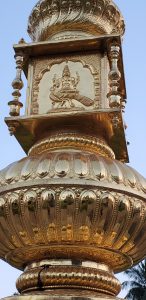
The gold plated flagpole has carved images on all 4 sides depicting 4 small alters. This is one of them and depicts Karthikeyan, the son of Lord Shiva, identified by his ride, the peacock.
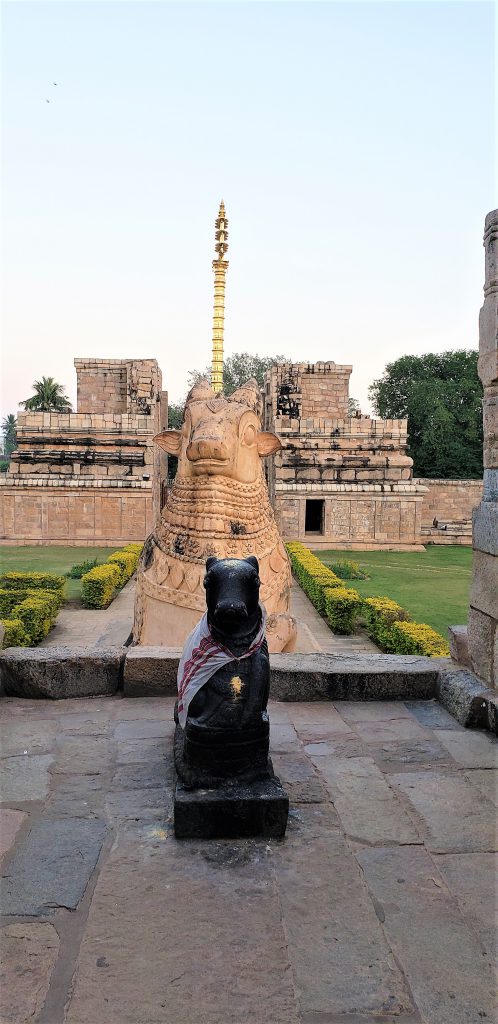
The black Nandi is the original Chola Nandi, the larger decorated Nandi near the flagpole was a later Nayak addition.
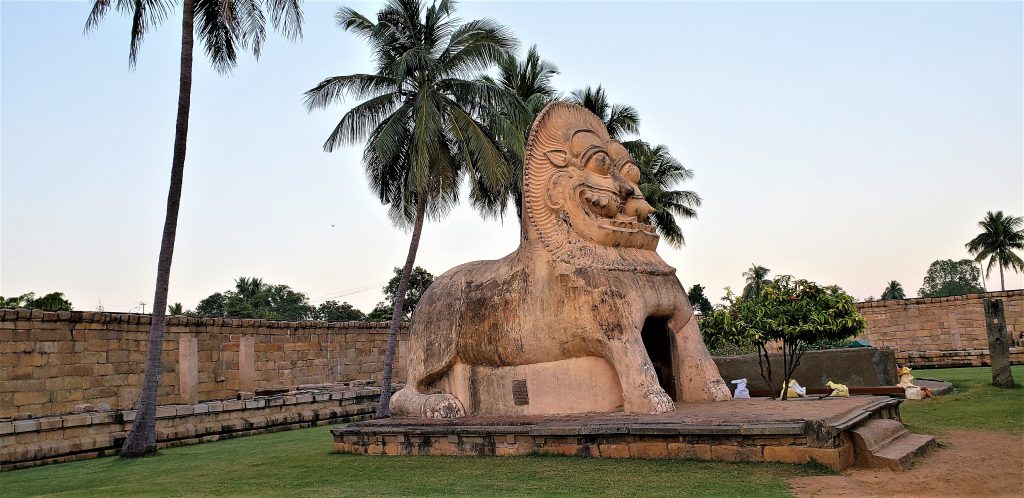
On the North West side of the temple courtyard is this lion faced entrance to a well.
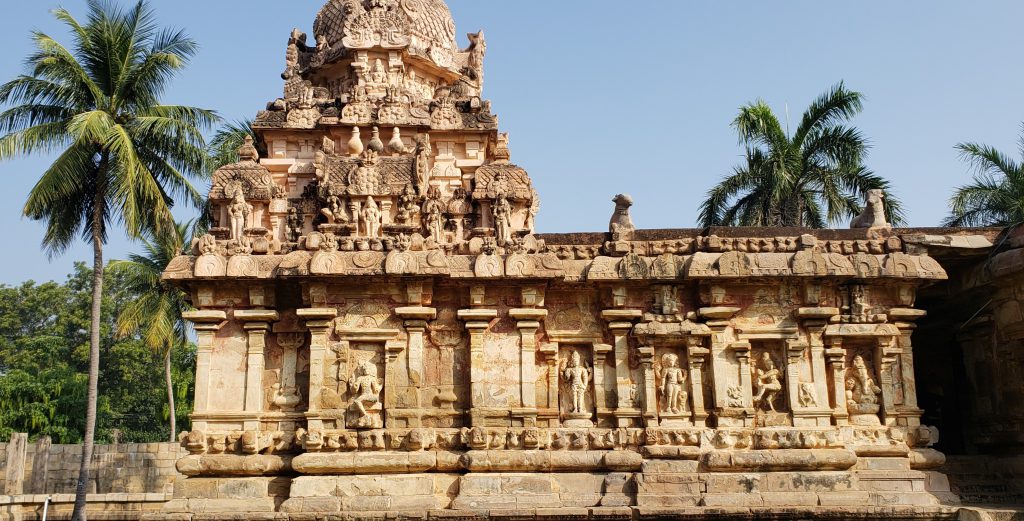
This depicts a portion of the temple which houses the main shrine/lingam. The outside is carved with Gods, Goddesses, dancers, musicians and texts describing the donations of the King for the temple.
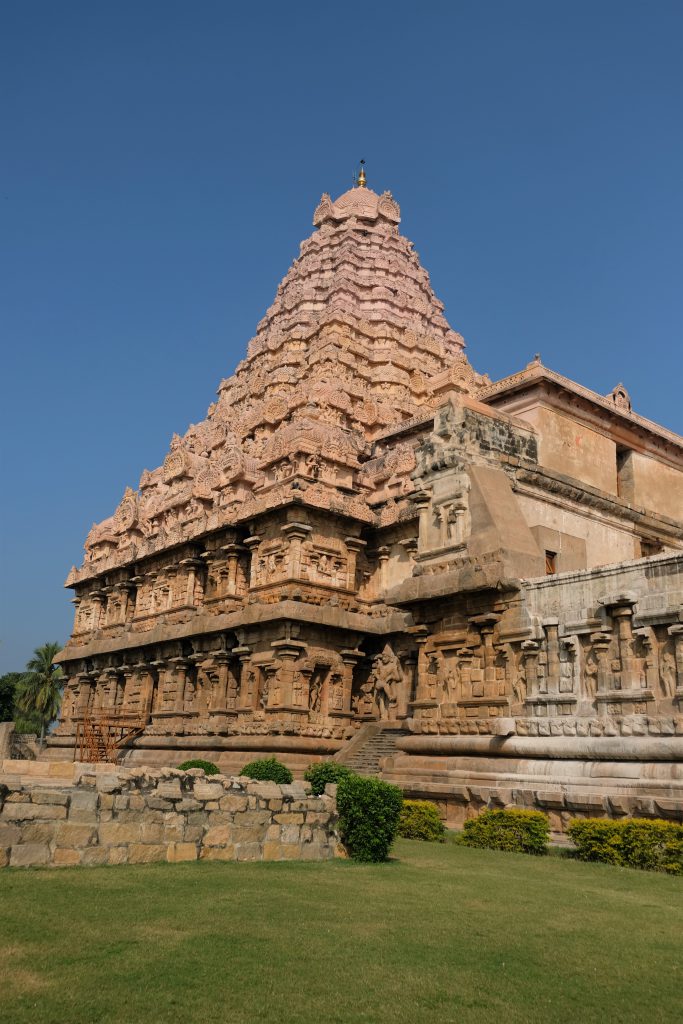
Another view of the same portion of the shrine.
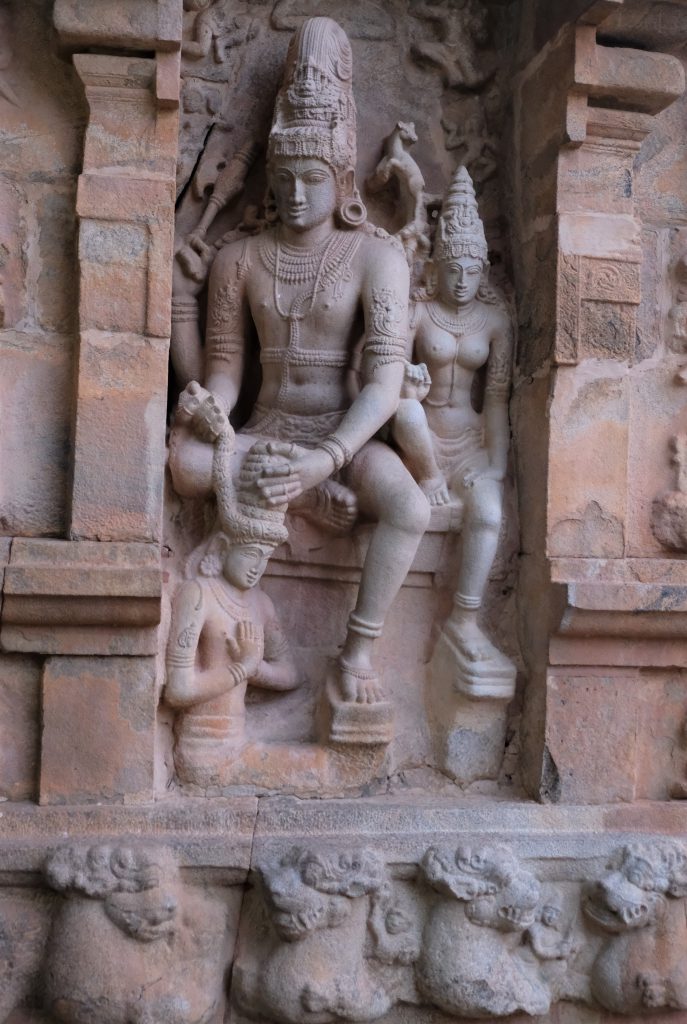
Chandeshanugraha murti: This stunning sculpture in one of the niches of the temple wall depicts Shiva garlanding Chandesha, a nayankar saint while his consort Parvati looks on. Chandesha was seen as a guardian of temples by the Cholas. This is also seen as Rajendra Chola being crowned by Shiva as Chandesha was sculpted in the likeness of the ruler himself.

Shiva as Nataraja, in a cosmic dance destroying the demon of ignorance under his leg.
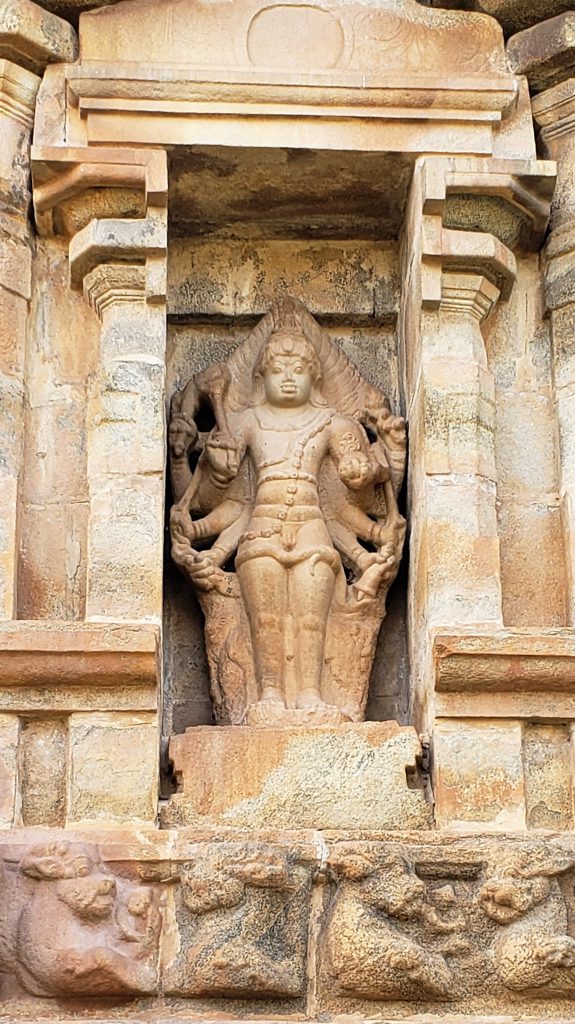
The temple shows many forms of Shiva and in this one Shiva wears the skin of a demon who took the form of an elephant to trouble his worshippers. This protective and fierce form of Shiva is in many Chola temples.
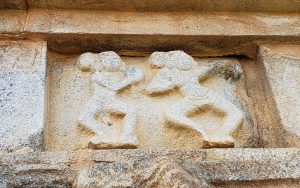
Dancing was important part of worship in Medieval temples as temples began to resemble palaces and Gods in temples were depicted like earthly kings in their palaces. Not only did they ritually inspect their realm, but there were rituals to wake, bathe, dress and entertain them. Music and dance were an important part of these rituals and recognizing the importance of these, we have inscriptions on the temple informing us of the donations given to the temple to maintain it which included allowances for dancers and musicians.
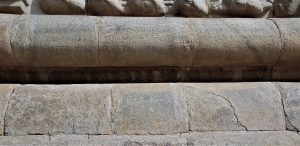
The donations from the king for the upkeep of the temple are recorded on the walls of the temples for all to read.
